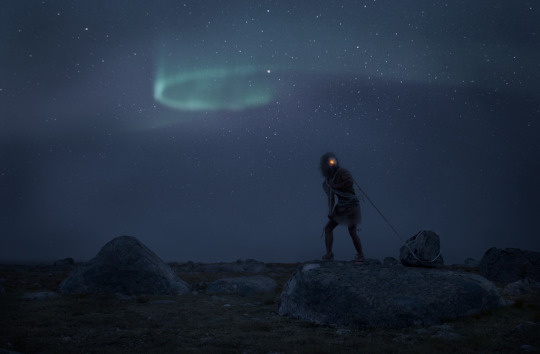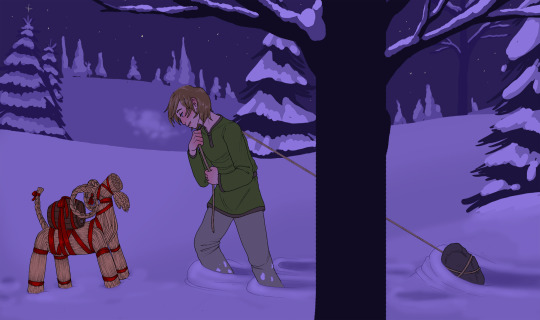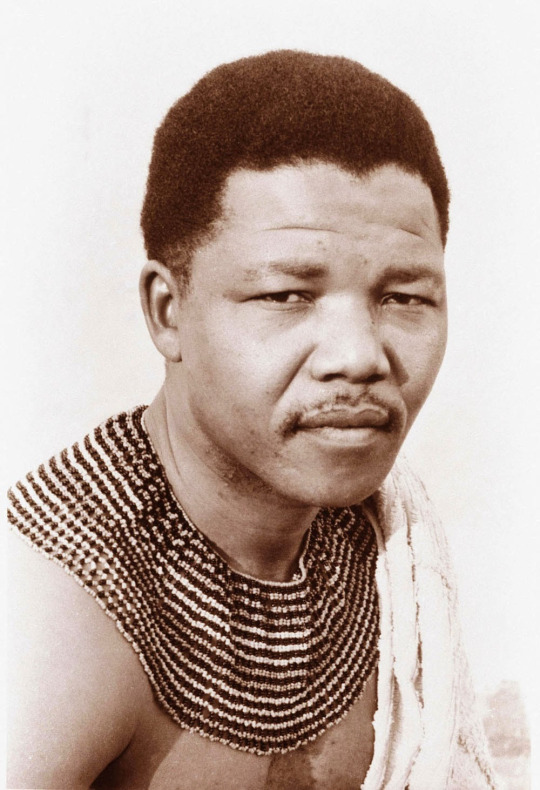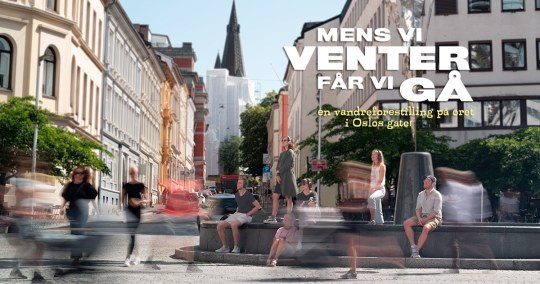#source: snl.no
Explore tagged Tumblr posts
Text
a simple translation for privatisert barnål by resirkulert. (a political song, I will provide short explanations for the political parties referenced in the footnotes)
first, a translation I can't do afaik: "barnål" means the "needles" (leaf equivalents) of Pinales trees (which includes: Araucaria, cedar, celery-pine, cypress, fir, juniper, kauri, larch, pine, redwood, spruce, and yew, according to Wikipedia, version 14. Dec 20:10 to 15. dec 17:43 and maybe further).
another note is that I'm pretty sure some parts were just written wrong in the lyric transcript, cause multiple lines weren't coherent sentences so I wasn't true to that.
[lyrics start]
Straight to the point with a lawyer
I have a quote, you probably vote pirate¹
demonstrate and respond to Karl Johan² against the state decision
React against the self-important and they look down on citizens like you
Bureaucrats everywhere and the serious talk puts me off
[instrumental]
The wave of right-wing politics pushes me further left than I need
Everything is covered in soot, blue and green³ and all the time the conversation is about money
Everything you hear around is a loud voice influenced⁴ by a discussion
And I'm starting to wonder if the whole parliament has become an illusion
[instrumental]
[chorus: With barnål and sewing thread, I am sewing myself in place, With barnål and sewing thread, I sew myself in place ]
[instrumental]
When we hit the streets, everything is financed privately
and on every corner there is a person who has been discriminated against
Norway will become a country where praise⁵ should feel registered
And I met a man in the street, he had unfortunately been privatized
[chorus x 4]
[lyrics end]
ok so the footnotes:
"voting pirate" probably refers to voting for the pirate party, which is a real party in Norway (even getting 0.1% of votes in the national election), want to make online piracy easier I think the name is from. They basically believe in a right to knowledge and lack of surveillance. In 2023 they changed their name to "the innovation and technology party". (source: SNL.no, itpartiet.no, no.m.wikipedia.org, en.m.wikipeia.org). It could also mean something else, I'm not the only song interpreter, but yeah, some cultural context I figured may be relevant.
Karl Johan (-s gate / 's street) is the street in Oslo, the capital, where the parliament (Storting) building is.
for this footnote I've interpreted "covered in soot" as a metaphor, considering Norway doesn't have coal power afaik. But this is about the criticism of "blue and green". both the green Senterparti (centre party), the blue-green color Venstre (left party (although they're actually right wing libertarians, pro privatization though pro queer) and the blue parties (all the right-wing ones) are for privatization. A notable exception here is mdg (The Environment Party The Green) who are leftists (criticized for dividing would-be Red Party (the furthest left with any power) voters) , but use the color green. (disclaimer that this is a politics summary and thus people have strongly varied perceptions of them, the parties vary locally (I'm not checking 10 k + communes), and I don't have any academic background in politics).
it feels weird to translate "å prege" as to influence, but it sorta does mean that. You could also say "informed by", "impacted by" and such. "his voice was [prega] by fear" means "his voice was full of fear".
I translated "annerkjennelse" as praise because of context, I assume it's about money, and basically praise = money being the message. But technically it means "recognition" (primarily), or "popularity", "acceptance ", "respect", "esteem" or "praise".
#ink.post#ink translates#musicblogging#translation#links#stuff with sources#source: wikipedia#source: snl.no#source: snl#source: itpartiet#norpol
0 notes
Text

Ty puts his hand in the Fenris wolf's mouth.
Source: https://snl.no/Fenrisulven
19 notes
·
View notes
Photo

Emanuel Vigeland (1875 -1948, Norwegian) ~ Adam and Eve, about 1897
[Source: snl.no]
42 notes
·
View notes
Photo


The Deildegast [Norwegian folklore]
A man, sometimes a farmer, illegally moves a boundary marker to enlarge his own land at the cost of his neighbors. When he dies, he is unable to find rest and returns to haunt the world of the living as a ghost as punishment for his crime.
This simple story, though many variations exist, is a recurring theme in folklore throughout the world. There are the Vuurmannen in Flemish/Dutch folklore, the Krivomjeri in Croatian folktales, and also the Norwegian story of the Deildegast.
A Deildegast is the undead spirit of someone who moved a boundary stone in life. It is forced to haunt the area around the stone. The ghost can move on to the afterlife as soon as it puts the stone back where it belonged, but this is impossible for it to do, as a Deildegast is cursed so that the stone would always slip and fall out of his hands during an attempt to move it. These beings are often associated with the Gjenganger, a similar undead creature from Scandinavian folklore.
A Deildegast was first mentioned in the Draumkvedet, which is a Norse poem from the late Middle Ages. Technically and formally it is a ballad, but it has a different melody and some other details make it different from traditional ballads.
Whether the Deildegast is a spectral ghost of a corporeal zombie differs depending on who you ask. In some versions, these beings have the ability to transform into an owl but I found no decent sources for that claim.
Sources: The Draumkvedet: https://snl.no/Draumkvedet https://onartandaesthetics.com/2016/09/02/ancient-forests-deep-fjords/ https://maskofreason.wordpress.com/the-book-of-mysteries/know-your-ghosts/europe/gjenganger/ (image source 1: Ole Marius Joergensen) (image source 2: DontFapGirl on Furaffinity.net)
27 notes
·
View notes
Text

Olie Halvorsdotter Medgaarden
from Tunhof (Tunhovd, Nore og Uvdal) - 1848
drawn by Joachim Christian Frich
Olie is depicted in traditional Nore og Uvdal style dress. Despite being 1848 she still has an empire waist due to the fashion being adopted around the beginning of the 19th century and then being conserved in the folk tradition.
Hers is different from the modern Nore og Uvdal bunad which has a more natural waist, due to its inspiration being in the surviving 18th century garments.
Though it is possible to get a reconstructed bunad from the early 19th century which is more similar to Olie's.
Sources(kjelder):
Rekonstruerte Numedalsbunader - snl.no Tunhovd : ei fjellbygd mellom to dalfører - Nore og Uvdal historielag, 1990 (nb.no) Photo: Norsk Folkemuseum
#bunad#traditional clothing#folk clothing#folk costume#historical fashion#19th century#regency#norwegian#Numedal#fashion history#drakt#drawing#18th century#portrait
1 note
·
View note
Text
Nelson Mandela
Nelson Mandela was born in the Eastern Cape in the village Mvezo 18th july 1918. Mandela was a liberation leader and politician. In 1994, he was selected to be president in South Africa and he was their president until 1999. He was an opponent to the apartheid regime and worked hard for the liberation movement. The apartheid regime accused him of being a traitor and for working against the regime. When they found him after a journey to spread his message he got caught and this led to him, being prisoned on an island called Robben Island were they sent all kind off lawbreakers. He was in prison at Robben Island in 1972 and sat there in 18 year until his realise in 1990. This was after a lot of pressure from foreign countries. Mandela was the world's most prominent symbol of peace and reconciliation in the late 1900s and until his death in 2013. Both during his captivity and later, Mandela was awarded a number of international awards, including the Nobel Peace Prize, which he shared in 1993 with his presidential predecessor, Frederik Willem de Klerk.

Xoxo Erleperle
This is my Sources:
https://snl.no/Nelson_Mandela
https://www.google.com/url?sa=i&rct=j&q=&esrc=s&source=images&cd=&cad=rja&uact=8&ved=2ahUKEwjI0OPbtdngAhUJ2aYKHTSNCkkQjhx6BAgBEAM&url=https%3A%2F%2Fwww.sahistory.org.za%2Fpeople%2Fnelson-rolihlahla-mandela&psig=AOvVaw1HNtACBmnWIqD9OUoPJ34y&ust=1551271205032552
0 notes
Text
Nelson Rolihlahla Mandela
Nelson mandela (1918-2013) was a South African jurist liberation leader and politician, and South Africa’s President from 1994 to 1999.
He opened his own lawyer firm with his friend (and later, the leader of ANC) Oliver Tambo in 1952. In the 1940’s, Nelson Mandela was a big influence on the ANC (African national congress). In 1956, he was accused of high treason acquitted.
Shortly after the Sharpeville massacre in 1960, in which 69 people were killed and 180 severely injured, the apartheid cabinet forbid ANC and other organizations. At the same time, ANC passed away from the nonviolent line that the organization had followed. Mandela spoke for and supported this strategy change. Mandela was responsible for building up the ANC as a secret organization and became the head of the armed wing of the ANC.
Nelson went underground after the cabinet banned the ANC. Shortly after the banning, the government started looking for nelson. In 1962 he snuck over border to today`s Botswana and then made a bigger trip around the world to make the liberation struggle more known, internationally. The same year Mandela tried to sneak back to Johannesburg; he was arrested and given five years in prison. One year later the apartheid cabinet unveiled the ANC`s hiding spot and Mandela was accused of terrorism and conspiracy against the state. This raised his penalty, and he was sent to death row (1964). He was on death row for 18 years on Robben Island, an island used as a prison almost continuously since the 1500. He was then sent to Pollsmoor-prison. After a total of 27 years in prison he was released.
Nelson Mandela played a central role in the negotiations that led to the first free elections in South Africa's history, and a formal abolition of apartheid (1994). Mandela himself was elected to South Africa's new president that year. Mandela also won Nobel Peace Prize, along with a number of other prices. He died at the age of 95 and is still an icon and a symbol of pace.
Source: https://snl.no/ https://no.wikipedia.org/wiki/Nelson_Mandela
lotta

0 notes
Photo

"Gigantic" 29. May 2021 #sketchadayapp #gigantic #giganticturtle #watercolor #watercolorpainting #underwater #turtle #coralreef #coral #coralcity #ecosystem Reference: 1. https://snl.no/havskilpaddefamilien 2. https://www.google.com/search?q=whale&client=ms-android-samsung-ga-rev1&prmd=inv&sxsrf=ALeKk02NlTLxN4mOLJeERZPnSa_svt64qw:1622289047358&source=lnms&tbm=isch&sa=X&ved=2ahUKEwiszY_T6e7wAhUyCRAIHY24AdsQ_AUoAXoECAIQAQ&biw=360&bih=648&dpr=3#imgrc=1ah03VoUH0flJM 3. https://www.google.com/search?q=turtle+eyes&tbm=isch&ved=2ahUKEwi045HH7O7wAhUOzyoKHUhiA8gQ2-cCegQIABAC&oq=turtle+eyes&gs_lcp=ChJtb2JpbGUtZ3dzLXdpei1pbWcQAzIECAAQEzIECAAQEzIECAAQEzIECAAQEzIECAAQEzoHCCMQ6gIQJzoECCMQJzoECAAQQzoICAAQsQMQgwE6BAgAEAM6AggAOgUIABCxAzoECAAQDVDXTVi7fGDNhAFoBHAAeACAAfgBiAGhDJIBBTcuNC4ymAEAoAEBsAEFwAEB&sclient=mobile-gws-wiz-img&ei=oy2yYPSFII6eqwHIxI3ADA&bih=648&biw=360&client=ms-android-samsung-ga-rev1&prmd=mivn#imgrc=1UhKndl9m7bcHM&imgdii=YxJVApsTIO2M7M (at Molde, Norway) https://www.instagram.com/p/CQB2apDLFkH/?utm_medium=tumblr
#sketchadayapp#gigantic#giganticturtle#watercolor#watercolorpainting#underwater#turtle#coralreef#coral#coralcity#ecosystem#imgrc
0 notes
Text
Got an ad that read something like "stop spiritual terrorism, find God". And its like. The only people terrorizing my spirit are Christians.
explanation below the cut but cw frustrating.
I've been harassed once on Tumblr, and that was Christians. Who could not fathom the basic historical fact that Christmas is a tradition that started in Norse religion, not Christianity. (sources: snl.no/jul, worldhistory.org, visitnorway.com, thepostgradchronicles.org, en.wikipedia.com/yule). (sidenote that I see some sources saying "Germanic" rather than Norse, which does not match what we learn at school, but I can't say for sure. Though the reference of the Norse god Odin makes me think they're just being stupid, he's not a '"Germanic god"" he's literally a Norse god - that much is common knowledge)
And recently at a party a Christian called me a psychopath for being atheist. (don't trust strangers coming up to you to discuss philosophy, it's a fucking trap yo).
6 notes
·
View notes
Text
Sources
Throughout this project I have used multiple sources. As facts in my essay, but also just as a basis of inspiration in the creation of my characters. Below are all the sources I used. But first I wanted to talk a bit about how I used them and what function they served.
A lot of the sources you see below have been used merely as inspiration for concept development. I saw it necessary to list them in the bibliography even if they weren’t actively used in the essay. Example, books like “Body Language” and “Staring: How we look” are books I used for creating my script and storyboard. Looking at the science behind staring and body language gave me sufficient info to create my script and the storyboard. Sadly I didn’t get to go into detail about this in my essay due to severe lack of words.
The lack of words is what led to a lot of issues within my essay, I didn’t have space to use facts from all the references I had. But I did use most of them on my blog. If I used a reference in the text you can find it by clicking on a word that is highlighted.
I also used a lot of the TFL website to find inspirational material for my character development. Facts and numbers functioned a lot as basis for my characters, I have gone through all of these facts in another post.
Bibliography
An urge to jump affirms the urge to live: an empirical examination of the high place phenomenon.. (2017). CPNP. Retrieved 28 March 2017, from https://cpnp.org/resource/reference/88955
Bakerloo line. (2017). En.wikipedia.org. Retrieved 31 March 2017, from https://en.wikipedia.org/wiki/Bakerloo_line
Beckett, S. (2004). Waiting for Godot (1st ed.). London: The Open University.
London Underground. (2017). En.wikipedia.org. Retrieved 31 March 2017, from https://en.wikipedia.org/wiki/London_Underground
Beckett, S. (2004). Waiting for Godot (1st ed.). London: The Open University.
Fast, J. (1988). Body language. Simon and Schuster.
Finding Occupation While Waiting. (2017). YouTube. Retrieved 31 March 2017, from https://www.youtube.com/watch?v=3C_QnHjzF0c
Ford, M. H. (2010). Body Language: And Behavioral Profiling. AuthorHouse
Franz, C. E., & White, K. M. (1985). Individuation and attachment in personality development:
Extending Erikson's theory. Journal of personality, 53(2), 224-256.
Garland-Thomson, R. (2009). Staring: How we look. Oxford University Press.
Introduction to Early 20th-Century Theatre - Victoria and Albert Museum. (2017). Vam.ac.uk. Retrieved 28 March 2017, from http://www.vam.ac.uk/content/articles/i/introduction-to-early-20th-century-theatre/
Guibourg, C. (2017). This is how many hours we waste on delayed Tubes. Cityam.com. Retrieved 31 March 2017, from http://www.cityam.com/221102/tfl-tube-delays-how-many-hours-londoners-have-wasted-waiting-late-tubes
Introduction to Late 20th-Century Theatre - Victoria and Albert Museum. (2017). Vam.ac.uk. Retrieved 28 March 2017, from http://www.vam.ac.uk/content/articles/i/introduction-to-late-20th-century-theatre/
Introduction to Postmodern Western Theater. (2017) (1st ed.). Retrieved from https://www.saylor.org/site/wp-content/uploads/2011/10/SAYLOR.ORG-ENGL101-POSTMODERNTHEATER.pdf
Jacobs, S. (2011). Framing pictures: film and the visual arts. Edinburgh University Press.
Jolyon Attwooll,. (2017). London Underground: 150 fascinating Tube facts. The Telegraph. Retrieved 28 March 2017, from http://www.telegraph.co.uk/travel/destinations/europe/united-kingdom/england/london/articles/London-Underground-150-fascinating-Tube-facts/
leksikon, S., estetikk, K., Film, f., -teori, T., Leinslie, E., & Arntzen, K. (2017). dramaturgi – Store norske leksikon. Store norske leksikon. Retrieved 28 March 2017, from https://snl.no/dramaturgi#-Likestilt_dramaturgi
London Underground. (2017). En.wikipedia.org. Retrieved 31 March 2017, from https://en.wikipedia.org/wiki/London_Underground
London Underground - Performance report (Period 8 2016/17 16 October 2016 – 12 November 2016). (2017) (1st ed.). Retrieved from http://content.tfl.gov.uk/lu-performance-report-period-8-2016-17.pdf
Matters, T. (2017). Facts & figures. Transport for London. Retrieved 28 March 2017, from https://tfl.gov.uk/corporate/about-tfl/what-we-do/london-underground/facts-and-figures
Matters, T. (2017). London Underground. Transport for London. Retrieved 28 March 2017, from https://tfl.gov.uk/corporate/about-tfl/culture-and-heritage/londons-transport-a-history/london-underground#on-this-page-2
Mediaeval influences on modern stage design: The Southern Speech Journal: Vol 18, No 3. (2017). Tandfonline.com. Retrieved 28 March 2017, from http://www.tandfonline.com/doi/abs/10.1080/10417945309371269?needAccess=true&journalCode=rsjc18
Metro.co.uk, A. (2017). If you get these Tube lines you're probably always late. Metro. Retrieved 28 March 2017, from http://metro.co.uk/2016/09/25/if-you-get-these-tube-lines-youre-probably-always-late-6151501/
Modern Theatre: Alternative Theatre - Victoria and Albert Museum. (2017). Vam.ac.uk. Retrieved 28 March 2017, from http://www.vam.ac.uk/content/articles/m/alternative-theatre-in-the-late-20th-century/
Modern Theatre: Physical and Visual Theatre - Victoria and Albert Museum. (2017). Vam.ac.uk. Retrieved 28 March 2017, from http://www.vam.ac.uk/content/articles/m/physical-and-visual-theatre/
Modernism and Theatre. (2017) (1st ed.). Retrieved from http://nptel.ac.in/courses/109106054/Chapter%2011%20Modernism%20and%20Theatre.pdf
multiple setting | stage design. (2017). Encyclopedia Britannica. Retrieved 28 March 2017, from https://www.britannica.com/art/multiple-setting
New Drama in the Early 20th Century - Victoria and Albert Museum. (2017). Vam.ac.uk. Retrieved 28 March 2017, from http://www.vam.ac.uk/content/articles/n/new-drama-in-the-early-20th-century/
Teater i perspektiv. (2017). Mml.gyldendal.no. Retrieved 28 March 2017, from http://mml.gyldendal.no/flytweb/default.ashx?folder=494&redirect_from_tibet=true
theatre - The evolution of modern theatrical production | building. (2017). Encyclopedia Britannica. Retrieved 28 March 2017, from https://www.britannica.com/art/theater-building/The-evolution-of-modern-theatrical-production
Theatre History - Victoria and Albert Museum. (2017). Vam.ac.uk. Retrieved 28 March 2017, from http://www.vam.ac.uk/page/t/theatre-history/
Transport for London Travel in London, Supplementary Report: London Travel Demand Survey (LTDS). (2017) (1st ed.). Retrieved from http://content.tfl.gov.uk/london-travel-demand-survey.pdf
Trofanenko, B. (2006). Interrupting the gaze: on reconsidering authority in the museum. Journal of Curriculum Studies, 38(1), 49-65.
0 notes
Text
Mens vi venter får vi gå

A few actors from Oslo Nye have made a performance for everyone who is happy in Oslo and who does not get to go out on vacation this summer! "Mens vi venter får vi gå "(While we wait we get to walk) is a an audio-guided walking performance( hiking theater) that is based on taking advantage of the opportunity the corona crisis has given us, namely to re-orientate ourselves. It's about putting one foot in front of the other and paying attention to what you don't usually pay attention to - seeing the city with new eyes, like for the first time.
The walking show starts at the main entrance of the Oslo Nye Theater in Rosenkrantz 'gt. 10, outside Oslo Akutten.
Idea, concept, script and participation: Petter Vermeli, Ingvild Holthe Bygdnes,Mari Dahl Sæther, Emilie Mordal,Tarjei Sandvik Moe, Kari-Ann Grønsund. Consultation: Ilene Sørbøe and Kim Bjarke Dramaturg: Ilene Sørbøe Sound design and music: Bjørn Ottar Undset Production manager: Tina Espejord TEXT / SOURCES: • Excerpt from “Peer Gynt” by Henrik Ibsen, adaptation of Njål Mjøs • Excerpt from “Sult , edited by Anders T. Andersen • Excerpt from “Mrs. Eva's Diary” by Hulda Garborg • “The Face” from “Éthique et infini” by Emmanuel Lévinas • Excerpt from "Among cycling prelates, the dance and the play" by Jo Stang • Excerpt from Bybi .no, "The sweet buzzing sound" • Excerpts from “Quotes” by Per Fugelli • Quotes by Halldis Moren Vesaas and Åste Dokka • Other sources: norgeshistorie.no, Hotel Cæsar Wiki, Snl.no, nbl.snl.no MUSIC: • “Oslo tells”, No. 4 • “Little cute tail”, Hubbabubba club • “J'ai deux amours”, Joséphine Baker • “I come”, Veronica Maggio • “Gauken, Springar”, by Olav Luksengård Mjelva • Hotel Caesar vignette
for more information visit: https://oslonye.no/mens-vi-venter-far-vi-ga/
36 notes
·
View notes